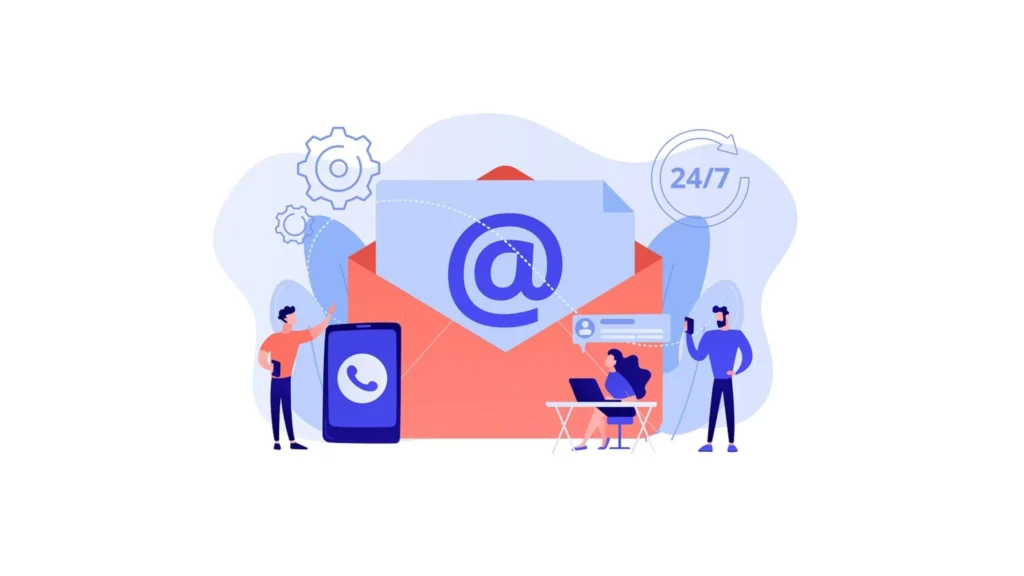Email marketing automation has become a must-have for companies looking for effective, targeted, and personalized connection with their customers. We go into the best practices for implementing email marketing automation to increase engagement, nurture leads, and drive conversions in this comprehensive guide.
The Effectiveness of Email Marketing Automation
Understanding the effectiveness of email marketing automation lays the groundwork for best practices. Investigate how automation increases personalization, streamlines procedures, and helps businesses to deliver timely, relevant content. Recognize the importance of automation in strengthening client relationships and increasing overall marketing efficiency.
Establishing Specific Automation Goals
Establish specific objectives that are connected with your business goals before digging into automation. Explore the process of identifying key performance indicators (KPIs) and creating customer journey maps. Understand how setting specific objectives guides the creation of targeted and effective automated email campaigns.
Building a Segmentation Strategy
Segmentation is a critical component of successful email marketing automation. Investigate the methods for segmenting your audience based on demographics, behavior, and preferences. Learn why tailored content is important for each group and how it helps to increased engagement and conversion rates.
Creating Engaging Email Content
The value of great material is not diminished by automation. Investigate ways for creating emails that are appealing to your target audience. Consider using persuasive content, eye-catching images, and unambiguous calls-to-action (CTAs). Recognize how relevant and valuable content fosters long-term engagement.

Implementing Drip Campaigns
Drip campaigns are an effective lead nurturing automation tool. Investigate the design and implementation of successful drip campaigns. Learn how to map out the customer journey, create a sequence of targeted emails, and optimize the timing and content to guide leads through the sales funnel.
Personalizing Customer Experiences
Personalization is a critical success factor in email marketing. Investigate automated ways for tailoring consumer encounters. Investigate dynamic content, personalized recommendations, and the use of customer data to generate unique and meaningful experiences.
Making Use of Triggered Emails
Triggered emails are responsive and timely, making them indispensable in the automation process. Investigate many triggers, ranging from user behavior to specific acts. Learn how to build up triggered emails for welcome series, abandoned carts, post-purchase follow-ups, and other events in order to contact customers at key moments.
Continuous Improvement Through A/B Testing
For optimizing automated email campaigns, A/B testing is vital. Examine the fundamentals of A/B testing, from subject lines to CTAs and design aspects. Understand how testing different variables aids in determining what resonates most with your target audience and enhances overall campaign performance.
Monitoring and Analyzing Performance Metrics
Insights derived from data are crucial for fine-tuning your automation plan. Investigate important performance indicators like open rates, click-through rates, and conversion rates. Learn how to measure and analyze performance using analytics tools, enabling data-driven decisions and continual improvement.
Subscriber Preferences and Consent Management
It is critical for successful email marketing automation to respect subscriber preferences. Investigate solutions for handling subscriber preferences, such as frequency and content preferences. Understand the significance of gaining and respecting consent, as well as adhering to data protection requirements.
Mobile Responsiveness Optimization
With a large percentage of emails being opened on mobile devices, optimizing for mobile responsiveness is a must. Investigate best practices for designing mobile-friendly emails, including responsive design, short language, and optimized images. Ensure a seamless and engaging experience for mobile users.
Avoiding Common Pitfalls in Automation
While automation has numerous advantages, it also has certain drawbacks. Learn about typical email marketing automation blunders and how you avoid them. From over-automation to ignoring personalization, learn how to strike a balance that improves rather than degrades the client experience.
Ensure Deliverability and Inbox Positioning
Even the most well-crafted emails will be ineffective if they are not delivered to the inbox. Examine best practices for email deliverability and placement. Investigate methods for keeping a clean subscriber list, improving sender reputation, and reducing elements that contribute to emails being tagged as spam.
CRM and Other Tool Integration
Email marketing automation is more effective when it is integrated with Customer Relationship Management (CRM) systems and other marketing tools. Explore integration strategies to ensure a unified view of customer interactions. Understand how syncing data across platforms contributes to a holistic approach to customer engagement.
Future Trends in Email Marketing Automation
The future of email marketing automation has a lot of promise. Investigate upcoming trends, such as the use of artificial intelligence for predictive personalization and advances in interactive email content. Position your automation plan to adapt to the changing landscape and capitalize on future advancements.
Conclusion
When done correctly, email marketing automation can be a powerful tool for engaging audiences, nurturing leads, and generating conversions. Businesses may utilize the full potential of automation to create meaningful customer experiences, improve efficiency, and achieve marketing success in the digital age by adhering to best practices.


